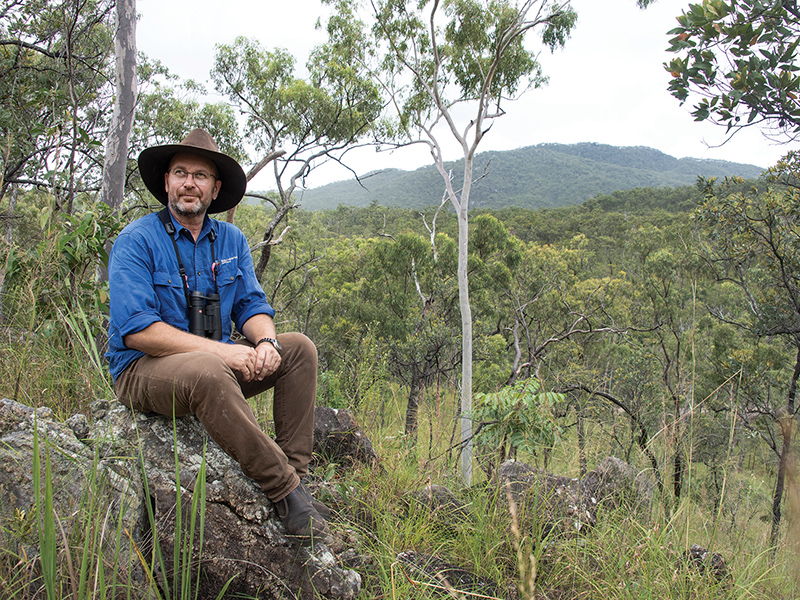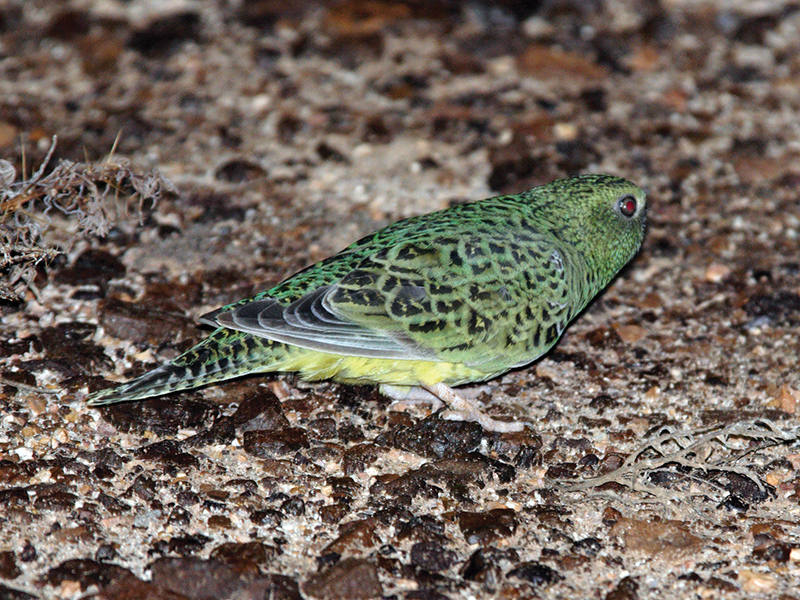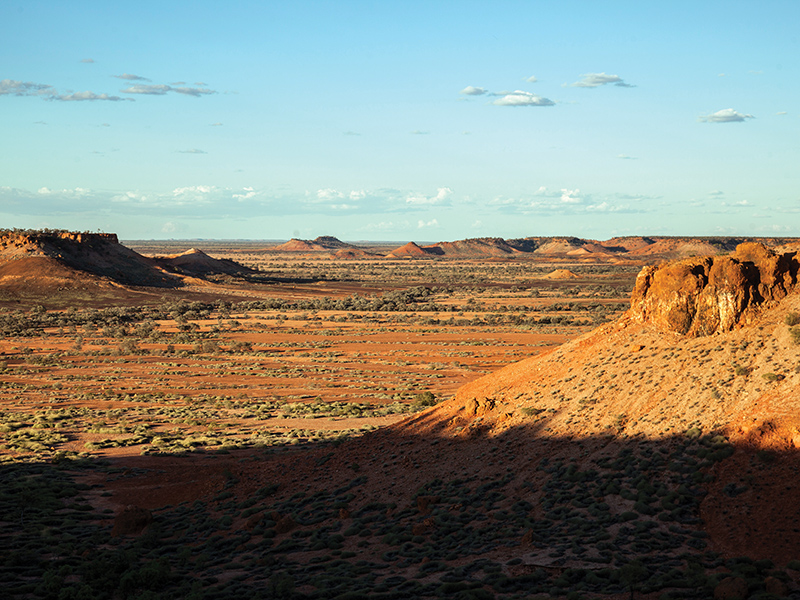
Private land manager profile: Dr Alex Kutt
Tuesday, 30 June 2020Dr Alex Kutt
Senior Ecologist North Australia, Bush Heritage Australia
Tell us about your organisation
Bush Heritage Australia is a national not-for-profit organisation committed to protecting Australia’s natural environment. We own and manage 1.2 million
hectares of private conservation reserves, and partner with Aboriginal people across a further 5 million hectares. Our network supports the
conservation of over 200 species that are listed as rare or threatened under state or Commonwealth law.
Some of our largest reserves are in south-west Queensland, including our two Simpson Desert red sand jewels, and Pullen Pullen Reserve, arid braided
Channel Country badlands home to the recently rediscovered and very rare night parrot.

A night parrot photographed at Pullen Pullen Reserve. Image: Nicholas Leseberg
What Threatened Species Recovery Hub research have you been involved in?
We have been working with hub scientists to better understand and manage feral cats at Pullen Pullen in order to protect the night parrot, as
cats are considered the main threat to the species. Pullen Pullen is 56,000 ha. Controlling cats across such a vast landscape is extremely hard.
Gains made by shooting, trapping and removing cats can quickly be undone as cats breed quickly and can travel far. Cat control is resource-intensive,
so we need to be strategic.
A key part of the collaboration with the hub is focused on understanding patterns of feral cat activity around night parrot habitat. Since 2016 we
have been monitoring feral cats with camera traps and sand plots.
This revealed the significance of drainage lines for cat movement. Last year we began GPS-tracking feral cats, which is providing detailed knowledge
about habitat use and distances travelled. The monitoring is enabling us to measure the effectiveness of different control strategies. We are collaborating
with Professor James Watson, Dr Steve Murphy and PhD students Nick Leseberg and Stephen Kearney at The University of Queensland on this work.
A second part of the project is exploring a novel low-cost concept for reducing feral impacts. Some scientists believe that if dingoes are more prevalent
they can mute cat activity. Working with Dr Tom Newsome and PhD student Emma Spencer from The University of Sydney at Ethabuka Reserve (away from the
night parrot population) they have been testing if carrion (dead kangaroos) can be placed to attract dingoes to an area and if that will in turn
reduce feral cat activity.

A view across part of Pullen Pullen Reserve, which is home to one of only three remaining known populations of the night parrot. Image: Rodney Dekker
Benefits of the collaboration
The importance of this work to Bush Heritage Australia cannot be underestimated. Science is vital to our conservation management and the partnership
with the hub allows us to undertake applied and innovative science with leading Australian scientists.
Fundamentally, it is delivering practical science to support effective on-ground reserve management. Our feral predator management will now be more
cost-effective and targeted, focused on the pinch-points of cat activity.
It has also given us the chance to properly test a promising-looking novel approach. We now know that using carrion to try and manipulate ecosystem
processes conceptually looks neat but practically has flaws.
These research partnerships give us confidence, especially in this isolated new world where smart decisions using scarce resources will become
more urgent and pressing.
Top image: Dr Alex Kutt at Bush Heritage Australia’s Yourka Reserve on Cape York. Image: Brian Casey